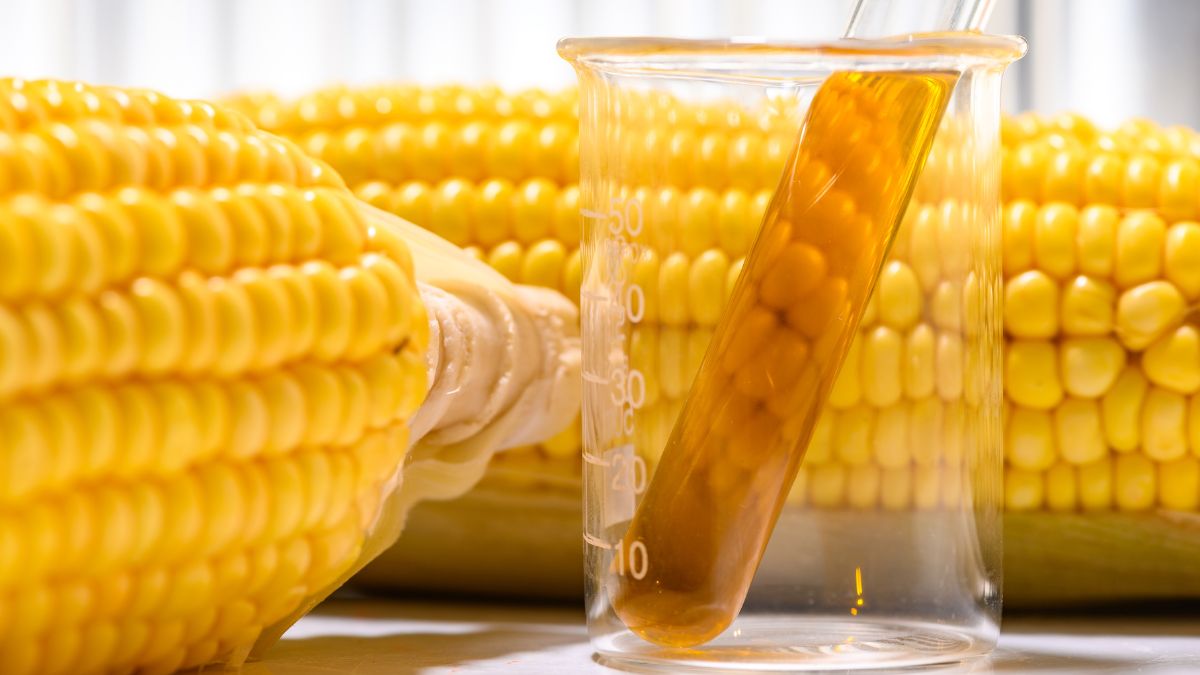Diaper rashes are a common concern among parents, and the search for effective remedies is…well, what’s the polite way of saying “stressful as hell”?
Oh, there isn’t one?
Got it.
Moving on!
One remedy that has garnered attention is corn starch. But the question remains: Can you use corn starch for a diaper rash?
In this article, we will delve into the topic and explore the potential benefits and considerations when it comes to using corn starch for diaper rash.
Join us as we separate fact from fiction and empower you with the knowledge to make informed decisions about your baby’s skincare!
Ready to roll?
Potential Benefits of Using Corn Starch for Diaper Rash
Due to its perceived benefits, many caregivers have turned to corn starch as a diaper rash remedy.
Here are some reasons why corn starch can be effective in treating diaper rash:
Gentle on Baby’s Skin
The tender skin of infants requires special care. One of the main reasons parents turn to corn starch for diaper rash is its mildness.
Unlike some commercial diaper rash creams, corn starch is an organic substance that doesn’t contain harsh chemicals.
This means it is less likely to irritate your baby’s delicate skin.
Moisture Absorption
Another potential benefit of corn starch for diaper rash is its ability to absorb moisture.
Keeping the diaper area dry is crucial in preventing and treating diaper rash.
Corn starch can help with this by absorbing excess moisture, creating a less favorable environment for bacteria and yeast that can cause diaper rash.
Reducing Friction
Friction is another common cause of diaper rash. The constant rubbing of the diaper against your baby’s skin can irritate and lead to a rash.
Corn starch has a smooth texture that can help reduce this friction, protecting the diaper and your baby’s skin.
Soothing Properties
Corn starch also possesses soothing properties, which can help to alleviate the discomfort associated with diaper rash.
When applied to the affected area, corn starch can provide a cooling effect, which can help to reduce inflammation and soothe your baby’s skin.
Easy to Apply
The application of corn starch is relatively simple, making it a convenient diaper rash remedy.
To use corn starch for diaper rash, clean the diaper area, pat it dry, and then apply a thin layer of corn starch.
This can be repeated with each diaper change.
Potential Drawbacks of Using Corn Starch for Diaper Rash
Despite the potential benefits, some concerns are associated with using corn starch as a diaper rash treatment.
It’s essential to be aware of these potential drawbacks before deciding to use corn starch for diaper rash:
Respiratory Issues
Given its powdery nature, corn starch can quickly become airborne and be inhaled by your baby.
This could cause breathing difficulties, especially in babies with respiratory issues or allergies.
Risk of Infection
If not correctly applied, corn starch can get trapped in the skin folds, providing an ideal environment for bacteria and fungi to grow.
This could increase the risk of infection and potentially worsen the diaper rash.
Risk of Ingestion
Babies are known for putting almost anything into their mouths, and corn starch is no exception.
Corn starch could cause digestive issues or pose a choking hazard if ingested.
Not Effective Against All Types of Diaper Rash
While corn starch may be effective in treating diaper rash caused by moisture and friction, it may not be effective against all types of diaper rash.
For instance, if a bacterial or fungal infection causes the rash, corn starch might not be the best treatment option.
Alternatives to Corn Starch for Diaper Rash
Given the potential drawbacks of using corn starch for diaper rash, you might wonder about other natural treatments.
Here are some alternatives to consider:
Cloth Diapers
One of the best ways to prevent diaper rash is using cloth diapers. These are made from breathable materials that allow for better airflow, reducing the risk of diaper rash.
Additionally, they are free from the harsh chemicals often found in disposable diapers, making them a gentler option for your baby’s skin.
Petroleum Jelly
Petroleum jelly is a safe and effective alternative to corn starch for diaper rash. It creates a protective barrier on the skin, keeping it moisturized and reducing friction.
Zinc Oxide Creams
Zinc oxide creams are often recommended as a diaper rash remedy.
They form a protective layer on the skin and have anti-inflammatory properties, helping to soothe and heal the skin.
Coconut Oil
Coconut oil is a safe, effective, and natural treatment for diaper rash. It has moisturizing and anti-inflammatory properties, helping to soothe and protect irritated skin.
Aloe Vera
Aloe vera is a plant-based remedy known for its soothing and healing properties. It can help to reduce inflammation and soothe skin, making it a helpful treatment option for diaper rash.
Frequently Asked Questions (FAQs)
Is cornstarch good for baby heat rash?
Applying cornstarch to heat rash may actually worsen the condition by further blocking the sweat ducts and trapping heat. Keeping the affected area cool, dry, and well-ventilated is generally advised.
Is cornstarch good for baby yeast infection?
Cornstarch is not recommended for treating baby yeast infections. It can potentially worsen the condition because it provides a favorable environment for yeast growth. You should speak to your doctor about baby yeast infection treatment options.
What is the best thing for raw diaper rash?
When dealing with a raw diaper rash, there are several steps you can take to provide relief and promote healing. First, make sure to change your baby’s diapers frequently to keep the area clean and dry. During diaper changes, use mild soap and warm water to gently cleanse the affected area, avoiding harsh wipes or fragrances that can further irritate the skin. After cleansing, pat the area dry gently with a soft cloth or allow it to air dry. Applying a diaper rash cream or ointment containing ingredients like zinc oxide or petroleum jelly can create a protective barrier and soothe the irritated skin.
What is the longest a diaper rash can last?
The duration of a diaper rash can vary depending on the severity of the rash and the effectiveness of the treatment. In most cases, with proper care and treatment, a diaper rash should improve within a few days to a week. However, some diaper rashes may persist for longer periods, especially if the underlying cause is not addressed or if the rash becomes infected.
How long to let diaper rash air out?
When allowing diaper rash to air out, giving your baby some diaper-free time for approximately 10 to 15 minutes at a time, several times throughout the day, is recommended. This allows the skin to breathe and helps keep the area dry. However, it’s important to ensure a safe and hygienic environment during this time to avoid accidents or messes. Place a soft, waterproof mat or towel underneath your baby to protect surfaces, and be prepared with a fresh diaper or cloth to address any needs quickly.
Wrapping it Up
While corn starch may relieve diaper rash, weighing the potential benefits against the risks is crucial.
It’s also worth considering other natural diaper rash treatments, such as cloth diapers and aloe vera, as these may provide a safer and more effective solution.
Remember, the best approach to managing diaper rash is prevention.
Keep your baby’s diaper area clean and dry, change diapers frequently, and use natural products free from harsh chemicals.
By taking these steps, you can help to reduce the risk of diaper rash and keep your little one comfortable.
Disclaimer: The information provided in this article is for informational purposes only and should not be used as a substitute for professional medical advice.








